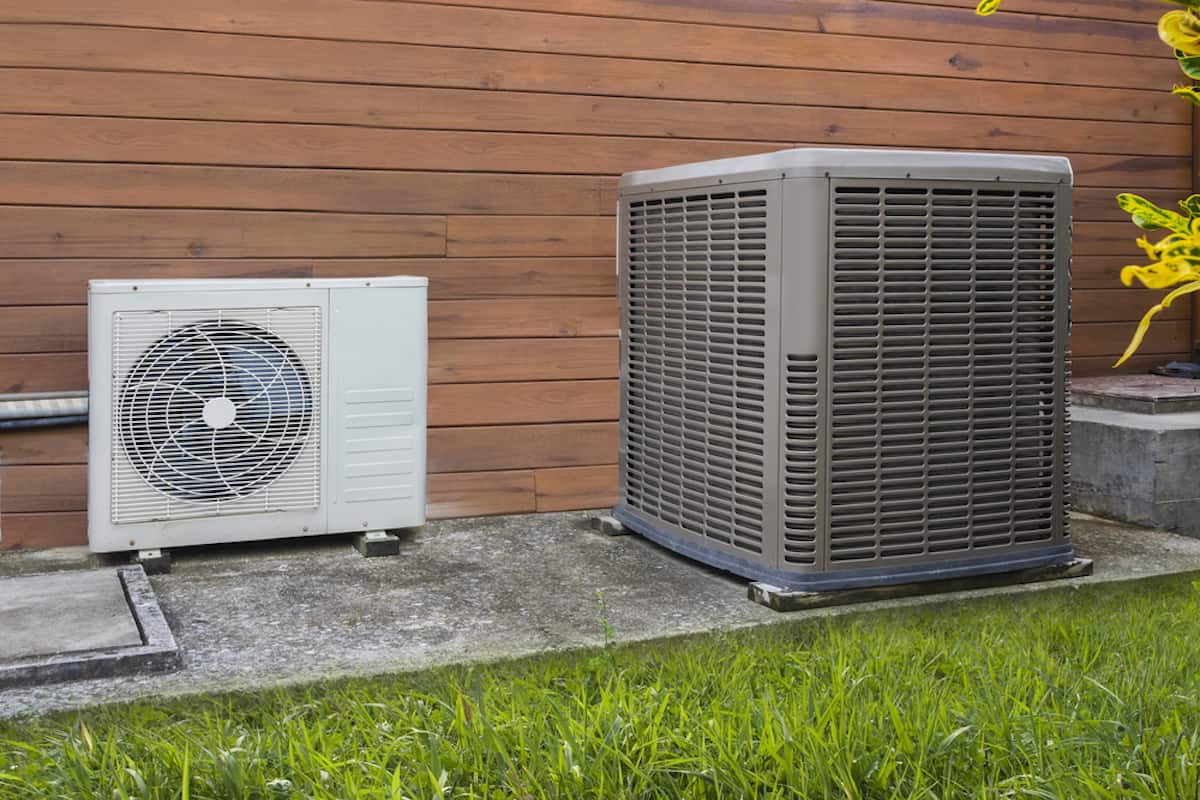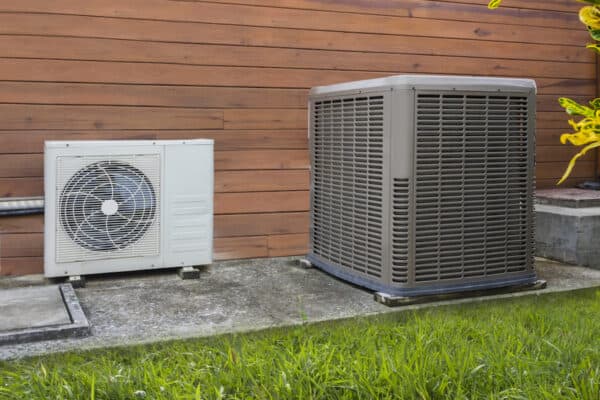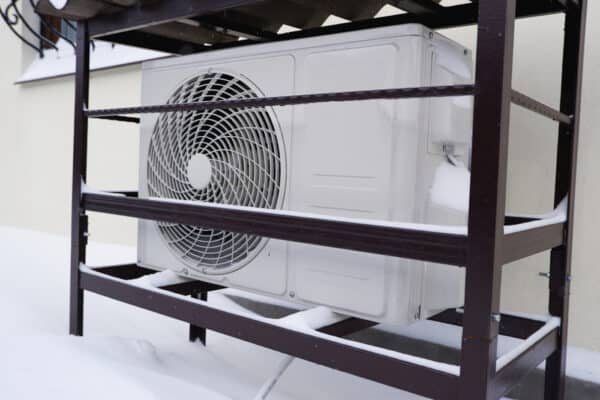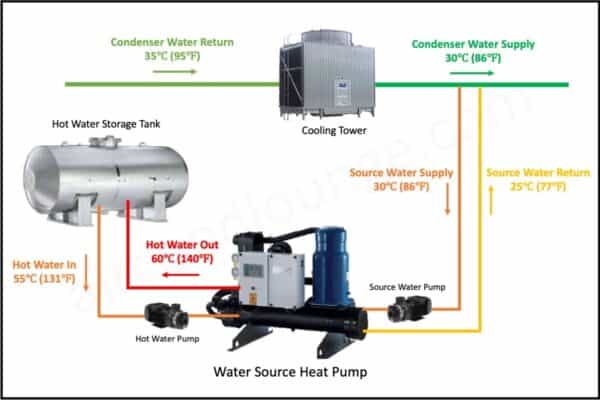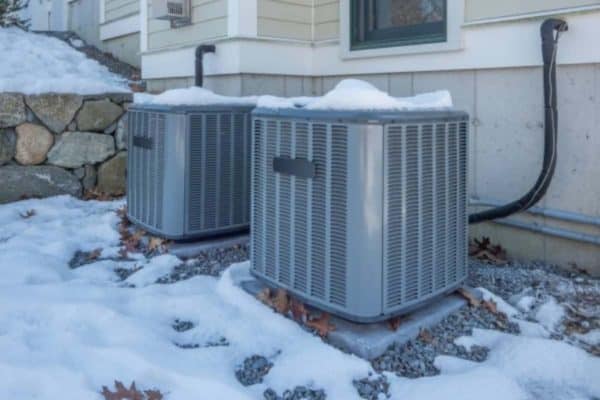What is an Air Source Heat Pump?
Air source heat pumps are getting a lot of attention as the world move towards a sustainable future. People who are concerned about energy savings are interested in an air source heat pump. But, what is an air source heat pump?
An air source heat pump is the most common type of heat pump that sources heat energy from the outdoor ambient air for indoor heating. When needed, it can reverse its process to provide cooling. Air source heat pumps also can produce hot water for shower and sinks.
Air source heat pumps are very useful in homes. They are able to cut home energy costs by a significant amount as they leverage air conditioning technologies.
How an Air Source Heat Pump Works?
The working principle of an air source heat pump is very similar to an air conditioner. Air source heat pumps use the refrigeration cycle to transfer heat from outdoor to indoor.
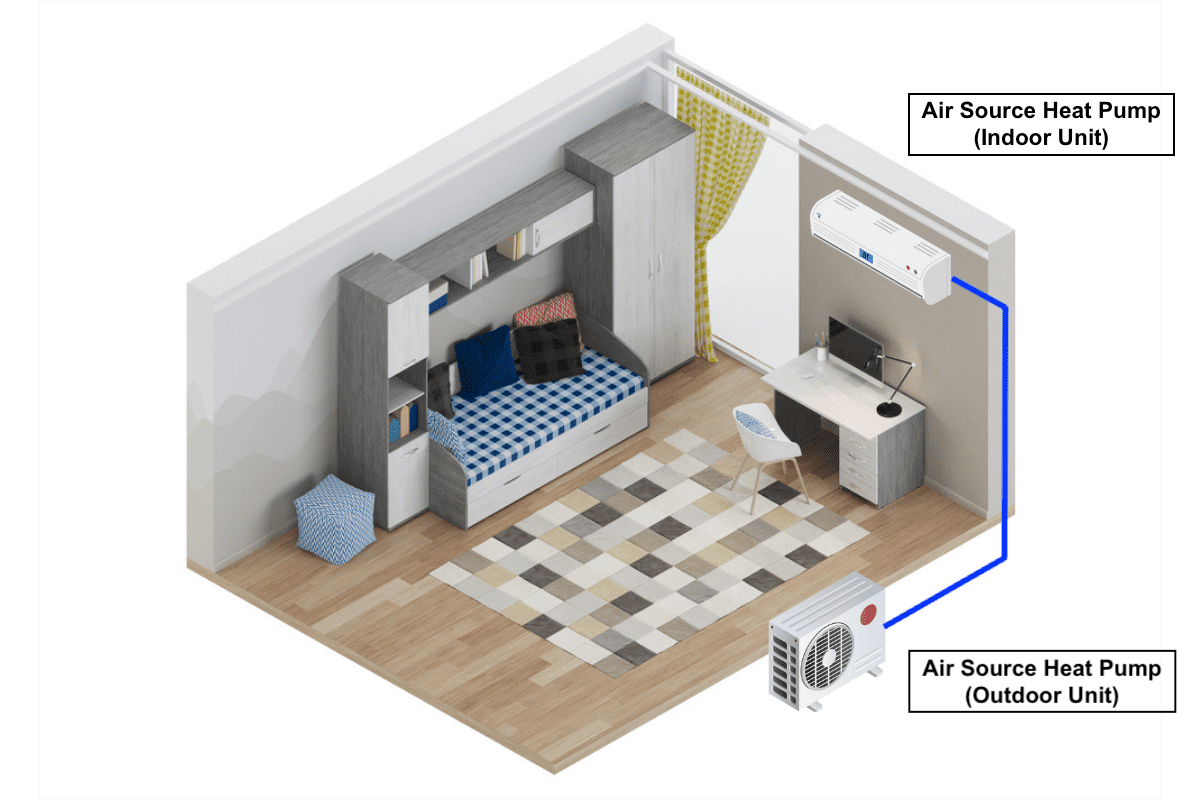
There are 4 major components worth mentioning in an air source heat pump. These components are essential for the refrigeration process.
1. Compressor for the Refrigerant Compression Process
The refrigeration process of an air source heat pump starts at the compressor that is located within the outdoor unit of the air source heat pump.
The refrigerant that flows inside the system gets squeezed by the compressor in order to increase its pressure and temperature high enough for adequate indoor heating.
As the compressor rotates, it compresses the gas refrigerant and pushes it to the condenser that is located within the indoor unit of the air source heat pump.
2. Condenser for the Refrigerant Condensation Process
The condenser is essentially a heat exchanger. Its job is to provide high-efficiency heat transfer between the refrigerant and the indoor air.
There is also a fan blower inside the indoor unit of the air source heat pump. The fan blower draws indoor air and forces it through the condenser so that heat energy can be transferred from the refrigerant to the indoor air.
When the indoor air is discharged from the indoor unit, it is warm. Then, by circulating the indoor air multiple times through the condenser, the temperature of the room or house can be kept at a comfortable level.
3. Expansion Valve for the Refrigerant Expansion Process
When the refrigerant releases its heat energy at the condenser, some of it turns from a gas state to a liquid state and the process is known as condensation.
Afterward, the gas and liquid mixture refrigerant returned back to the outdoor unit of the air source heat pump where it meets the expansion valve.
The expansion valve is essentially a metering device that reduces the pressure of the refrigerant rapidly like a hair spray. As a result, the temperature of the refrigerant drops significantly.
At this point, the air source heat pump system must control the expansion of the refrigerant such that the temperature of the expanded refrigerant is lower than the ambient air temperature so that the refrigerant is able to source heat from the ambient air.
4. Evaporator for the Refrigerant Evaporation Process
Once the refrigerant passes through the expansion valve, its temperature should be below the ambient air temperature while passing through the evaporator.
The evaporator is also a heat exchanger. It makes sure that the refrigerant absorbs heat energy from the ambient air effectively.
Other than the compressor, the expansion valve and the evaporator, an axial fan is also present within the outdoor unit of the air source heat pump.
The axial fan draws the ambient air and forces it through the evaporator so that heat energy can be transferred from the ambient air to the refrigerant.
Once the refrigerant absorbed the heat energy from the ambient air, it should all be in a gas state where it can safely proceed to the compressor to repeat the whole process again.
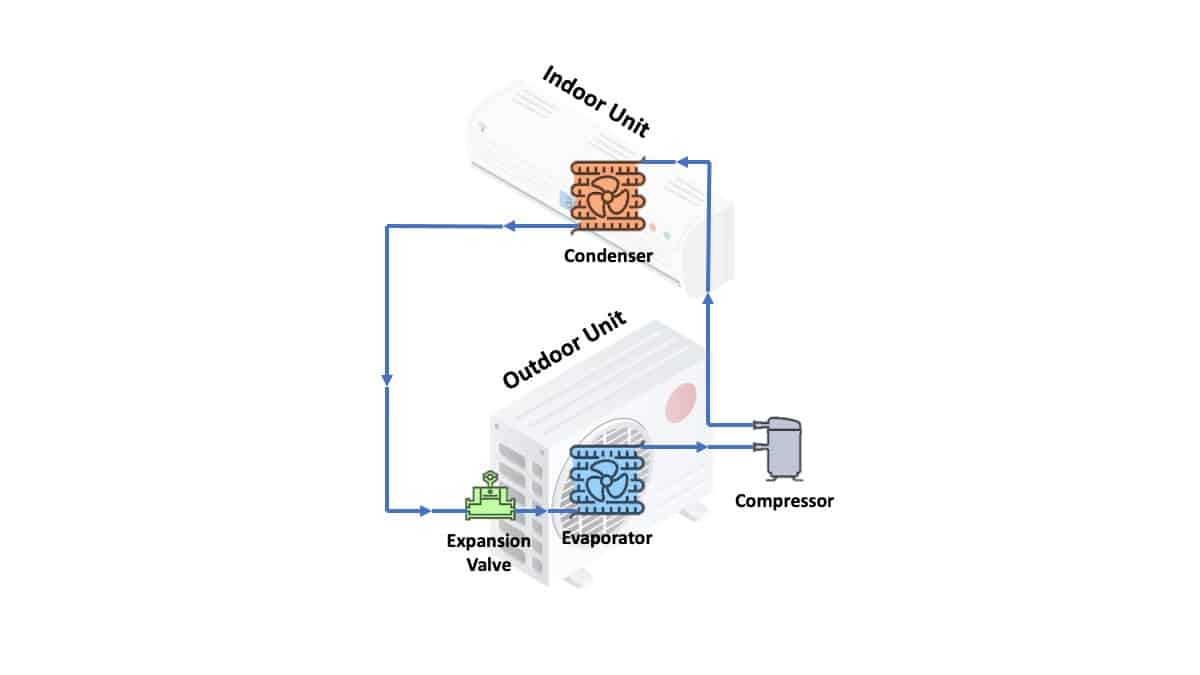
The key to enabling an air source heat pump to work in low ambient air temperature is its ability to bring its refrigerant down below the ambient air temperature.
This is possible because of an engineered mixture called refrigerant. Refrigerants have unique properties that enable the evaporation process to occur even at very low temperatures.
Therefore, the 4 major components and the refrigerant are what make an air source heat pump still able to provide adequate heating even when the outside air temperature is very low.
Air Source Heat Pump in Cooling Mode
When needed, an air source heat pump can be switched from heating mode to cooling mode by means of pressing the cool mode button on the remote control.
In cooling mode, a reverse valve that is located within the outdoor unit of the air source heat pump will engage and switch the entire refrigeration process.
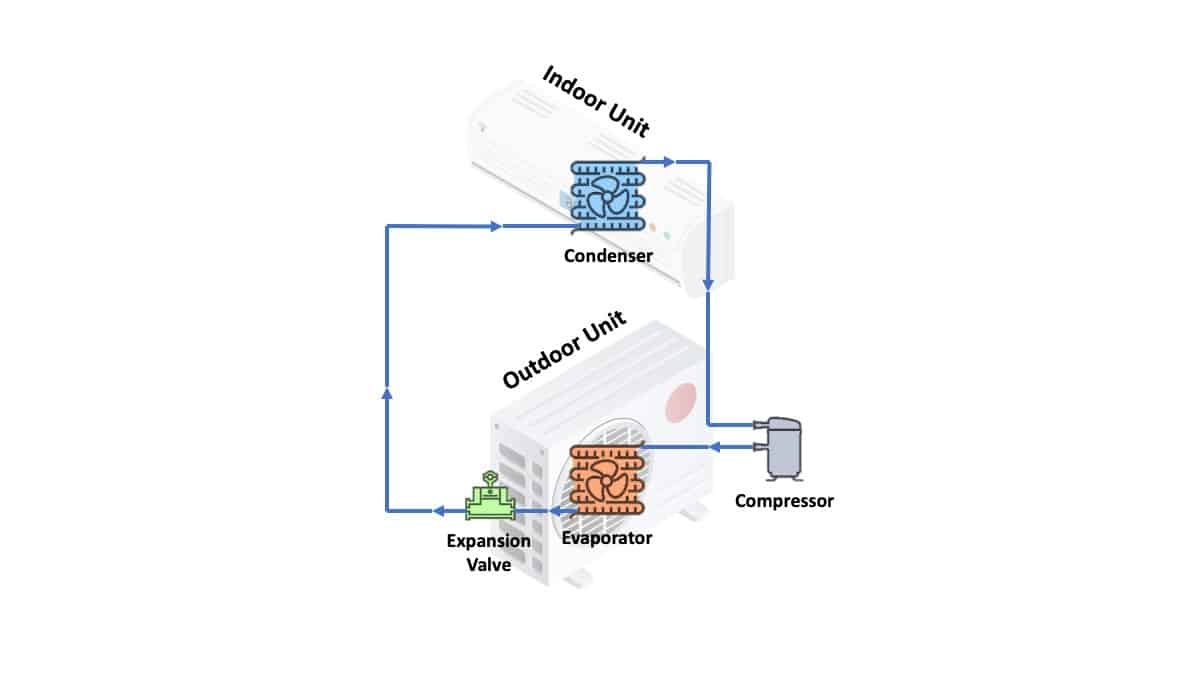
As a result, the condenser becomes the evaporator and the evaporator becomes the condenser.
For cooling, the air source heat pump works like the below sequence:
- The compressor squeeze the refrigerant to increase its pressure and temperature.
- The condenser transfer heat from the refrigerant to the ambient air.
- The expansion valve further reduce the temperature of the refrigerant.
- The evaporator transfer heat from the indoor air to the refrigerant, thereby cooling the room.
- The refrigerant goes back to the compressor and the cycle repeats.
For home heating and cooling, an air source heat pump always has a cool mode function for us to switch from heating to cooling.
However, a cool mode is absent when the air source heat pump is used to produce hot water for shower, bathroom sinks and kitchen sinks.
Air Source Heat Pump for Hot Water Production
An air source heat pump can also be used to produce hot water for shower and sinks. An air source heat pump for hot water is also known as an air-to-water heat pump.

Instead of an air conditioning indoor unit, the outdoor unit of an air source heat pump is connected to a hot water storage tank for hot water production.
In addition to the mentioned components within the outdoor unit, there is also a water pump inside the outdoor unit that is used to circulate the water between the heat pump and the hot water tank.

The water pump draws the cold water from the hot water storage tank and passes it through the condenser of the heat pump which is now a different type of heat exchanger that is meant to accommodate water.
At the condenser, there is no direct contact between the water and the refrigerant.
Instead of heating the indoor air, the refrigerant releases heat into the water which raises the temperature of the water. The water is then stored in the hot water tank for later use.
Air Source Heat Pump Indoor Units
For home heating and cooling, there are several types of indoor units available for the air source heat pump system.
The most common type of air source heat pump indoor unit is the wall-mounted type. The second goes to the ceiling cassette type followed by the ceiling ducted type, the ceiling exposed type and the floor-mounted type.
Ductless indoor units include the wall-mounted unit, the ceiling cassette unit, the ceiling exposed unit and the floor-mounted unit.
The ceiling ducted unit is the only indoor unit that requires a duct.
If an air source heat pump consists of one indoor unit and one outdoor unit only, it is also known as a single-zone mini split heat pump or a single-split heat pump.
However, if the outdoor unit of the air source heat pump is connected to multiple indoor units, it is also known as a multi-zone mini split heat pump or a multi-split heat pump.
The multiple indoor units that connect to a single air source heat pump outdoor unit can be a mixture of different types of indoor units as mentioned earlier.
Energy Efficiency of Air Source Heat Pumps
Air source heat pumps leverage the refrigeration process to achieve efficient heating and cooling. They harvest heat energy from the ambient air which is “free” and “renewable”.
On the other hand, traditional electric resistance heaters purely use electric energy for heating. In comparison, an air source heat pump use more than 3 times less energy than an electric resistance heater.
Because the outdoor unit of an air source heat pump discharges cold air, its discharge air is often redirected to places where mild cooling is needed so that the energy does not go wasted.
If you have anything to add (or ask) about this topic, leave a comment down below!


